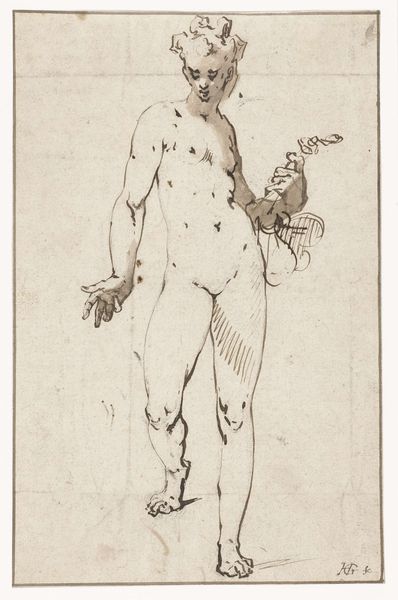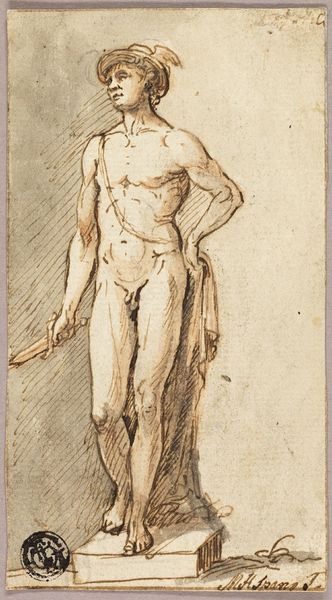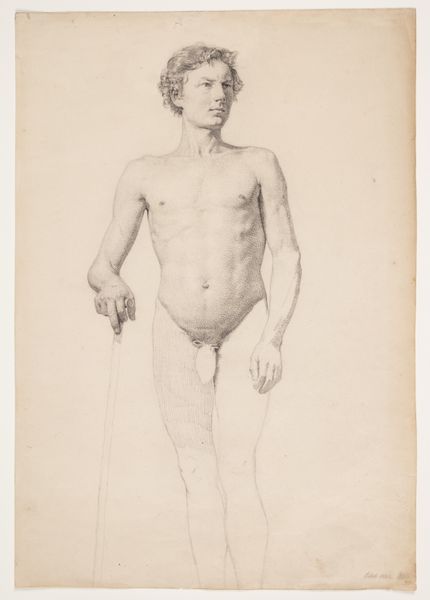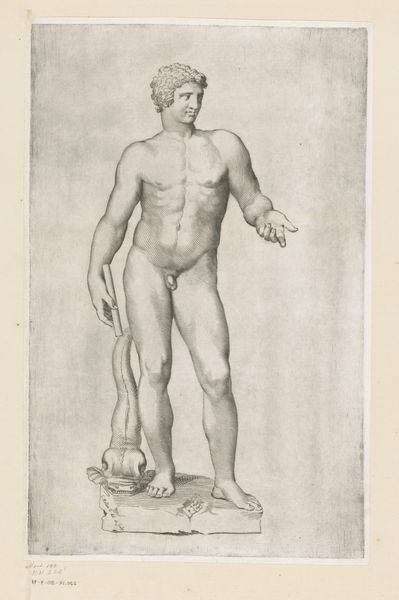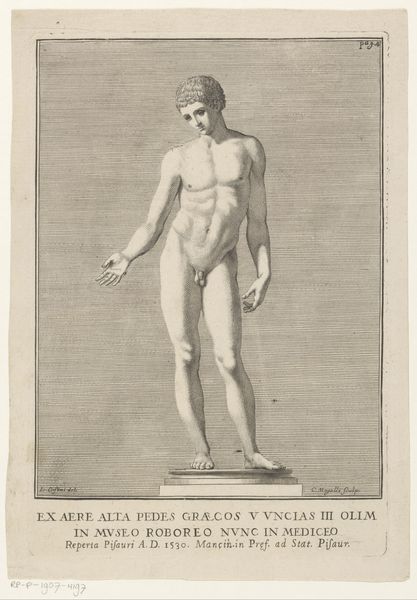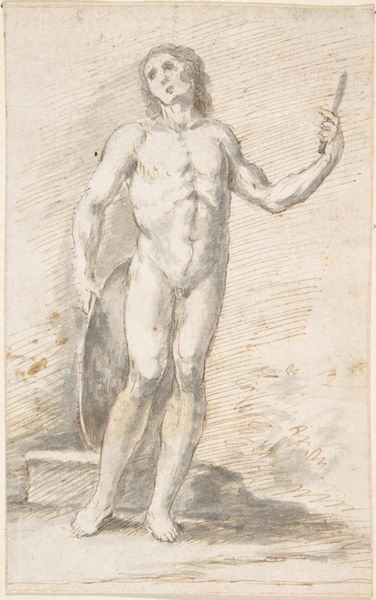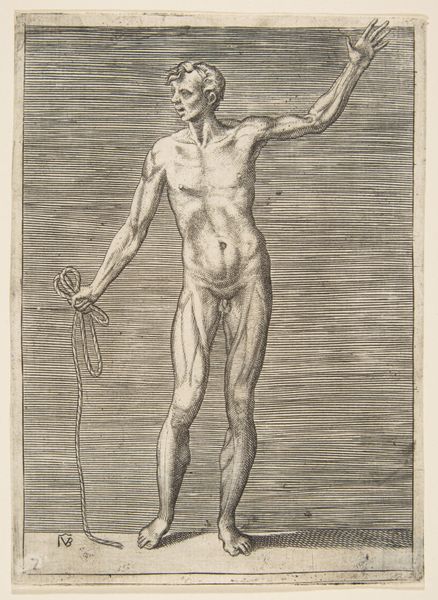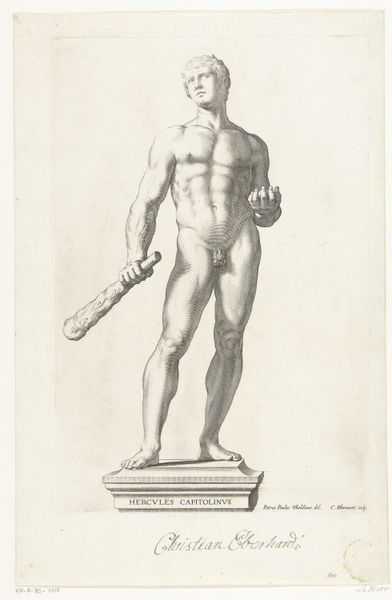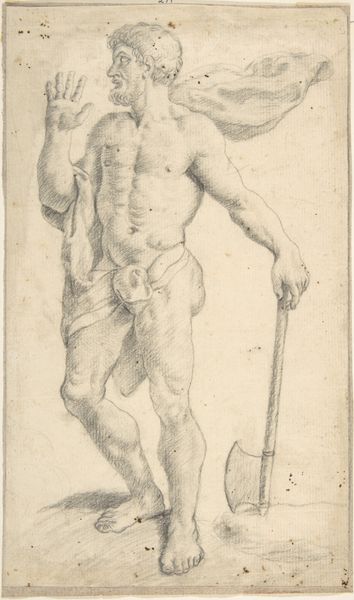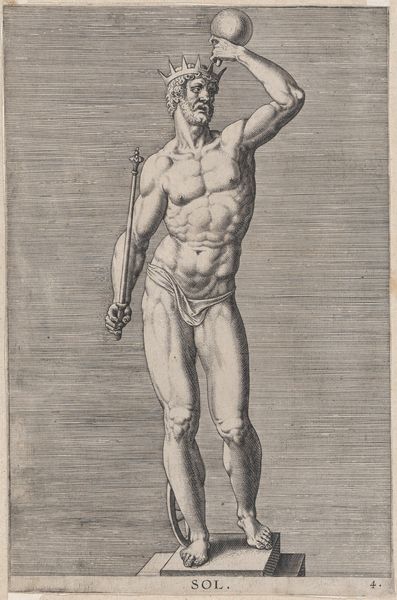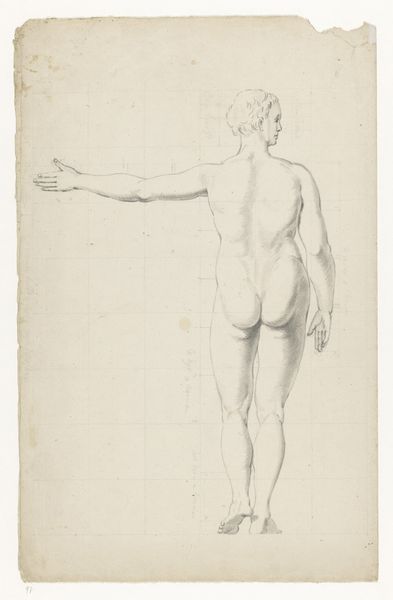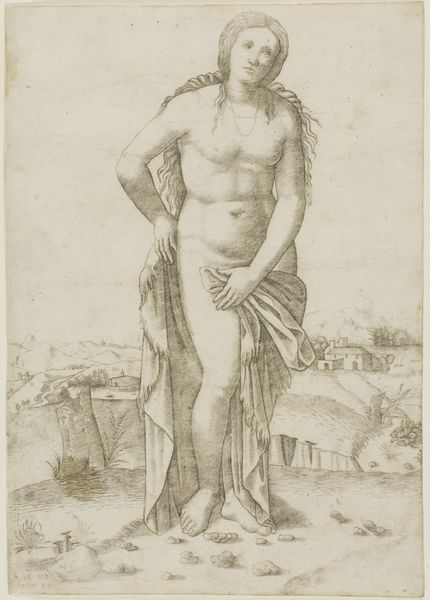
drawing, ink
#
drawing
#
neoclacissism
#
pen sketch
#
figuration
#
ink
#
ink drawing experimentation
#
sketchbook drawing
#
genre-painting
#
nude
Dimensions: height 120 mm, width 80 mm
Copyright: Rijks Museum: Open Domain
Curator: Anthonie van den Bos, a relatively little-known name, created this ink drawing some time between 1778 and 1838, during the height of Neoclassicism. It's titled "Naakte staande man met doek voor zijn midden," or "Naked Standing Man with Cloth in Front of His Middle" if we translate it directly. Editor: The raw honesty really hits me—there's this vulnerability, a casualness that makes it surprisingly intimate. It doesn't feel like high artifice, like so many neoclassical pieces. Curator: Exactly! The pen and ink give it that immediacy. And it makes one wonder—who was he? Classical ideals were everywhere, but van den Bos's depiction seems to soften the stoicism; almost hesitant. This vulnerability shifts the cultural connotations considerably. Editor: Hesitant indeed, he almost looks as if he's caught mid-stride or perhaps embarrassed by the display, and the title is just incredibly descriptive, which brings out this curious detachment from typical heroic representations we tend to see, even within academic art of this time. The cloth isn’t so much hiding him, it is accentuating an imposed and archaic sense of decorum. Curator: In Western art history, the heroic male nude became a symbol of power, often drawing parallels to gods and athletes, or to demonstrate ideal, mathematically calibrated proportions of beauty as per antiquity. That symbolism certainly evolved across history depending on patriarchal interpretations of purity and sin. Editor: Which makes me wonder what impact the subject's race and/or socioeconomic standing has on my perception of the piece. Had van den Bos made the identity of the figure clearer—either in dress or clearly defined environment or background—then it may allow for commentary on intersectional issues and societal expectations that affect how masculinity is expressed or repressed based upon context and identity markers, rather than reduced to purely artistic considerations of "beauty" or mathematical standards of ideal proportions, especially by our contemporary standards. Curator: Yes, to delve deeper into the layers of how symbols of masculine identity intersect—a vital component, indeed. As it stands, there remains an engaging exploration of a motif—that speaks softly to ideals of beauty which, ultimately, shift across the epochs. Editor: Absolutely. And in his casual vulnerability we glimpse a potential for reclaiming these archetypes in radical and inclusive ways.
Comments
No comments
Be the first to comment and join the conversation on the ultimate creative platform.
